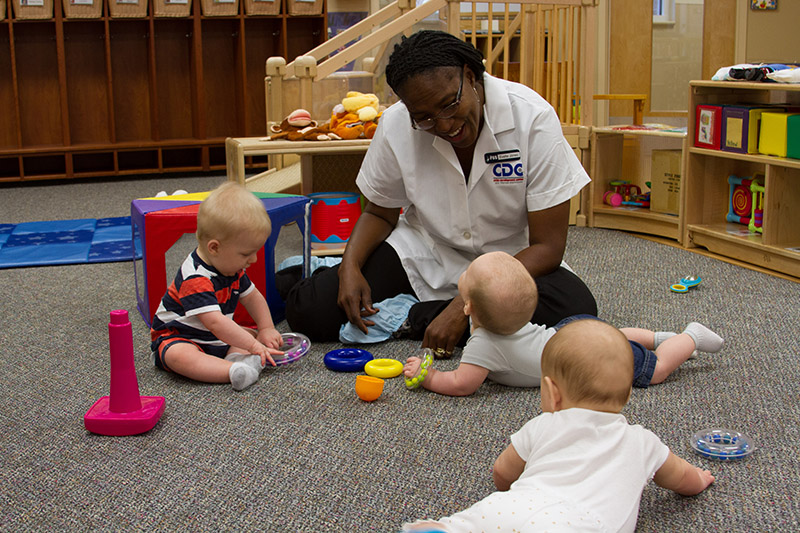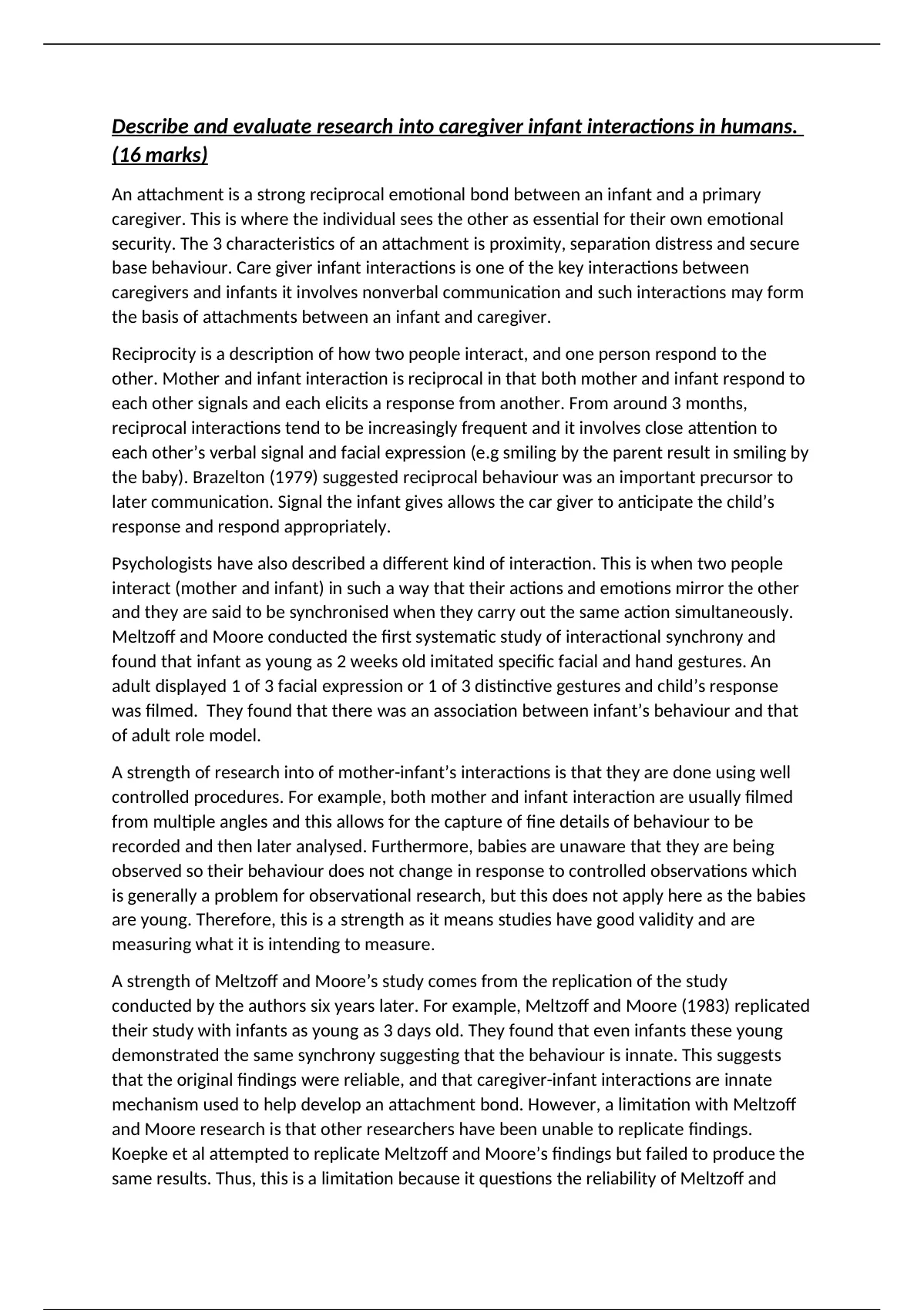
A deep dive into caregiver behavior through a gender le...
As children mature, problems stemming from troubled caregiver-infant relations may result in referral to mental health, early intervention, or child protection services. The accurate and appropriate assessment of caregiver-infant interaction is critical for early recognition of problematic relations and for informing suitable treatment modalities.

CaregiverInfant Interactions AO1 (A LEVEL PSYCHOLOGY REVISION) YouTube
Abstract. Caregivers and infants co-regulate their physiology, emotions, and behavior in a way that is dynamically responsive to each other and the contexts in which they live. This paper is an introduction and call to action for researchers interested in understanding how to study caregiver-infant interactions in the home and diverse cultural.

Caregiver infant interactions Caregiver infant interactions Strengths Limitations P A
Caregivers use a range of verbal and nonverbal behaviours when responding to their infants. Previous studies have typically focused on the role of the caregiver in providing verbal responses, while communication is inherently multimodal (involving audio and visual information) and bidirectional (exchange of information between infant and caregiver).

CAREGIVERINFANT INTERACTIONS IN HUMANS BUNDLE Includes Introduction to Attachment & Schaffer's
The chapter focuses on what is currently known about specific kinds of caregiver-child interactions that are thought to contribute to supportive relationships in child care, and thus to favorable experiences and outcomes for children. First, we discuss how adult-child relationships and interactions in infant-toddler child care are conceptualized.

3. Attachment Caregiverinfant interactions in humans reciprocity and interactional synchrony
Research support for caregiver-infant interactions. Feldman and Eidelman (2007) - an observational study which found that mothers responded to their babies in a reciprocal way two-thirds of the time Isabella et al. (1989) - better quality of maternal care was associated with higher levels of mother-infant synchrony; Evaluation of this research

CaregiverInfant Interactions (A03) YouTube
Reciprocity refers to the process in which a behaviour is matched during an interaction e.g. smiling back when someone smiles at us. Reciprocity develops, in its simplest form, at a very early age. According to Feldman (2007), reciprocity can be seen in interactions from 3 months of age. This conclusion was supported by Meltzoff & Moore (1997) who demonstrated that babies as young as 12-27.

Caregiverinfant interactions in humans reciprocity and interactional synchrony
Though rarely included in studies of parent-infant interactions, affectionate touch plays a unique and vital role in infant development. Previous studies in human and rodent models have established that early and consistent affectionate touch from a caregiver confers wide-ranging and holistic benefits for infant psychosocial and neurophysiological development.

Caregiver Infant Interaction Video YouTube
The moments when caregivers are prompted to answer questionnaires should be strategically selected based on particular times of interest (i.e., wake, evening, and bedtime), random sampling, or caregiver initiated assessments in response to specific events, such as caregiver-infant interactions (Shiffman et al., 2008; Smyth & Heron, 2014) or.

Attachment ATTACHMENT Caregiverinfant interactions in humans reciprocity and interactional
From birth, interactions with others are an integral part of a person's daily life. In infancy, social exchanges are thought to be critical for optimal brain development. This systematic review explores this association by drawing together infant studies that relate adult-infant behaviours - coded from their social interactions - to.

Promoting Guidance The Environment Virtual Lab School
Caregiver-infant interactions -A-Level Psychology. Attachment-Is an emotional bond between two people.It is a two-way process that developed over time. It leads to certain behaviours e.g clinging and proximity seeking, and serves the function of protecting an infant. Caregiver-Any person who is providing care for a child such as a parent.

Mount Vernon News
intro- para 1. - define what an attachment is. - what are caregiver infant interactions= key interactions between caregivers and infant to show an attachment has been formed. para 2. - what is reciprocity= description of how 2 people interact, infant and PCG take turns to respond to each others behaviour and elicit responses from each other.

Caregiver Infant Interactions YouTube
The moments when caregivers are prompted to answer questionnaires should be strategically selected based on particular times of interest (i.e., wake, evening, and bedtime), random sampling, or caregiver initiated assessments in response to specific events, such as caregiver-infant interactions (Shiffman et al., 2008; Smyth & Heron, 2014) or.

Caregiver Burnout Caring for Aging Parents Where You Live Matters
This systematic review explores this association by drawing together infant studies that relate adult-infant behaviours - coded from their social interactions - to children's brain measures collected during a neuroimaging session in infancy, childhood, adolescence or adulthood. In total, we identified 55 studies that explored associations.

Describe AND Evaluate Research INTO Caregiver DESCRIBE AND EVALUATE RESEARCH INTO CAREGIVER
Abstract. This chapter reviews some theoretical underpinnings to early language acquisition, including research into early bi- and plurilingualism, both simultaneous and consecutive, and the implications for the role of input and interaction in language development. It then discusses this within the context of a multilingual world and describes.

ALevel Psychology (AQA) Attachment CaregiverInfant Interactions YouTube
5. Chapter Two. Research Evidence on Caregiver-Child Interactions and Professional Development Supports. In this chapter, we review literature on caregiver-child interactions and professional development supports in ECE. We begin with an overview of the findings regarding the importance of high-quality caregiver-child interactions in ECE.

Describe and evaluate research into caregiver infant interactions in humans 16 marks
the measures' implications for research and practice. Theoretical perspectives of caregiver-infant interaction The propensity for developing strong emotional bonds to particular indivi-duals is a basic component of human nature (Bowlby, 1988). Caregiving and care seeking are indispensable social roles. In its purest form, caregiving